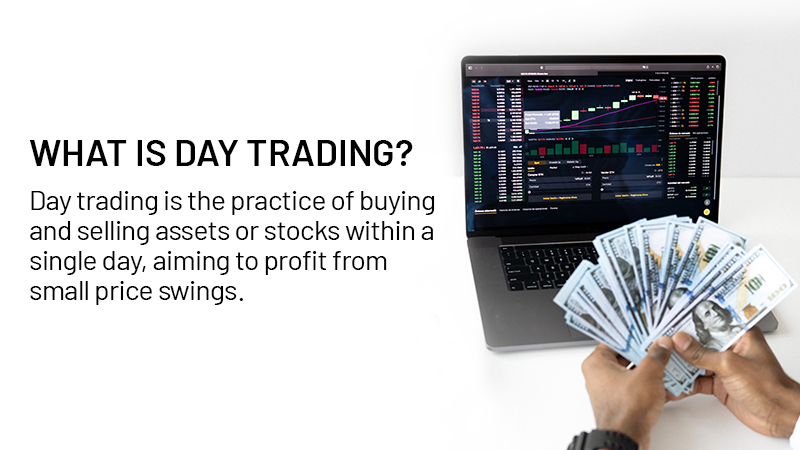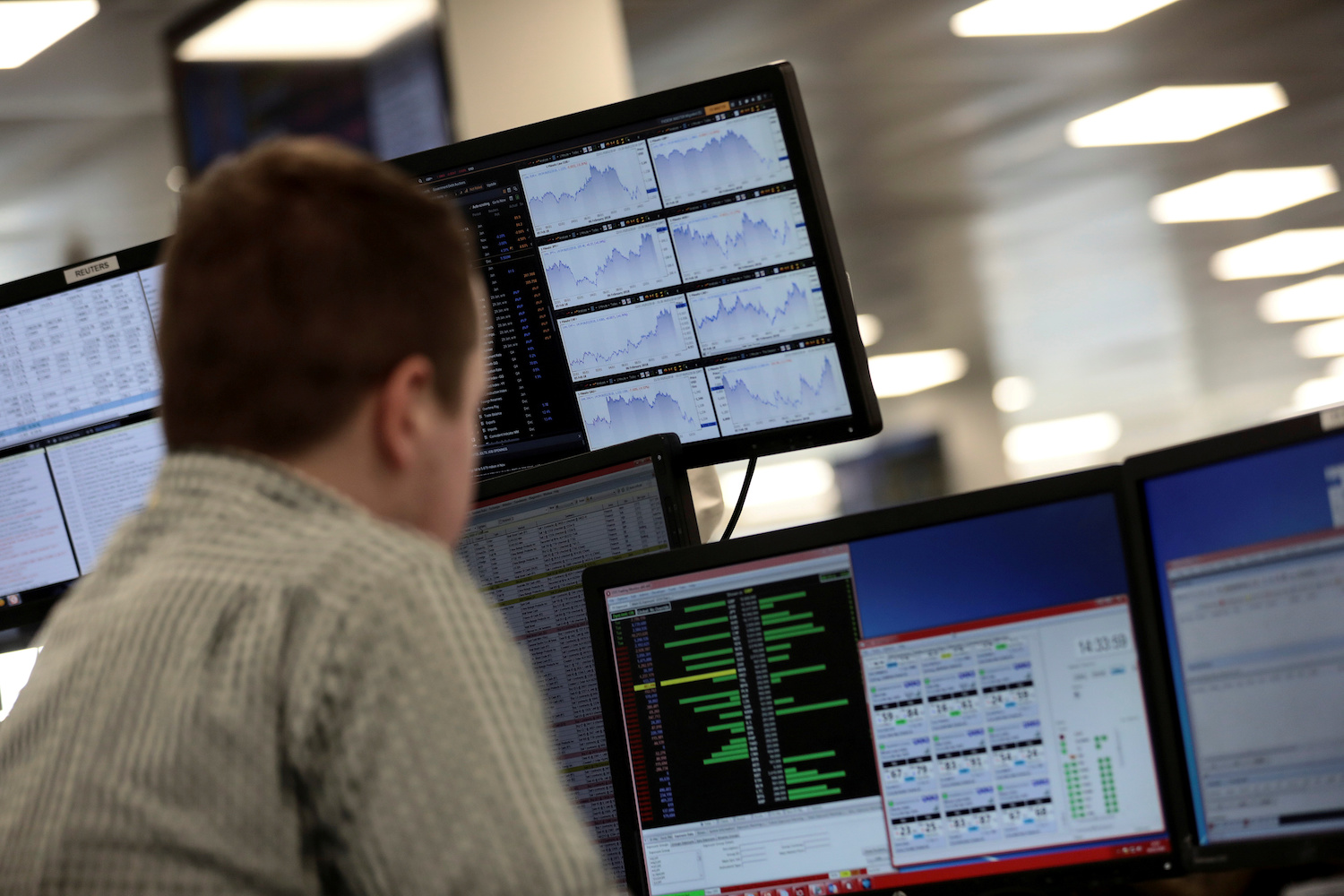(AF) It’s not how you imagine day trading to be. No one is shouting across a frenzied trading floor. But for Asia’s professional day traders, who wake up before the markets do, the goal is simple but the deadlines still tight – buying and selling assets in a single trading day.
Day trading really caught on during the pandemic even though the concept has been around since the early 1900s. But with many suddenly jobless or facing a drop in income as lockdowns hit, buying and selling equities offered a solution.
Also on AF TV: US tightens the noose around Chinese telecom companies
Once upon a time, trading was something only professional brokers and seasoned business people did, but now, thanks to apps like Robinhood, investing has become a mass pursuit – this is the era of the retail investor.
Asia Financial talked to some of the region’s top-rated day traders to find out more…
Which Trend Is Your Friend
Jason Sen began his career in the options pits on the trading floor of the London International Financial Futures and Options Exchange (LIFFE) in 1987 at the age of 19, making markets on his own account. It was a different time, he admits.
“Remember, there were no mobile phones and everything was analog. I had to learn all the hand signals. I admit I thought I wasn’t going to make it.”
Today, Jason owns three hotels in Thailand and is the founder of a trading advisory platform called DayTradingIdeas.

Day trading involves using technical analysis and charting systems to make many trades in a single day. Swing trading makes trades based on swings in stocks, commodities, and currencies that take place over days or weeks.
“I thought of giving up trading and retiring comfortably by 40 before the pandemic struck. Tourism has been affected in Thailand and I had to go back to full-time trading,” he said.
Jason wakes up at 5am and tracks over 12 markets. His specialisation lies in providing technical analysis on crypto, forex, commodities and indices alongside advising major investment banks like Citi, Deutsche, BoA, VTB Capital. He started DayTradersIdeas with the sole purpose of helping retail investors make sound decisions. “Nowadays, most of my clients are retail investors,” he says. “Finance has become democratic. These clients come to me after being burnt once before. There are numerous scammers out there.”
Spotting A Successful Day Trader
“It’s not that difficult really. Closely follow the trace of the offer,” adds Jason. “You can’t get huge profits immediately. Has your trader been in the business long and does he have a social media presence? These are some signs to look for.”
Jason also warned against being swept away by waves of trends.
“As day traders, we need to look out for trends that are moving the market. The trend can actually be your friend but which trend? You’ve got to figure that out. One can’t go blindly in.”
Jason has managed to build a loyal following for his content and trade analysis. Regular subscribers to his platform are charged a monthly fee and premium subscribers are charged a little more. He also provides live up-to-date information about the volatility of the markets.
When it comes to talking numbers, Jason lets the pips he earns do the talking. A pip, short for ‘percentage in point’ or ‘price interest point,’ represents a tiny measure of the change in a currency pair in the forex market.
On an average day, Jason makes 40-60 pips and on a good day it can go up to 100 pips per day.
Don’t Quit The Day Job Just Yet
Rajan Rajkumar is a 26-year-old successful day trader from India who has amassed an online following of over 400,000. His full-time day trading journey began when the pandemic was at its peak and he quit his well-earning IT job in Chennai. But Rajan’s journey in day trading started when he was just 22 years old.
His mantra to being a successful trader is ‘Get dirty and learn.’ But Rajan admits that he has made mistakes and lost huge amounts of money on account of that advice.
“I know the pain of a beginner. I started getting profits from my trading strategies in 2019 but did not quit my job until December of that year. Money started trickling in only 12-16 months after I started active trading,” he said.

Rather than doing intra-day trading which ends as the market closes, Rajan specialises in swing trades, a strategy that focuses on finding smaller gains in short-term trends and cutting your losses quicker.
“Honing intra-day trading takes time but gains in swing trading can be small but consistent. For beginners, swing trading is usually safer as compared to intra-day. Swing trading positions are usually held a few days to a couple of weeks or longer.”
Rajan stresses that would-be investors should do their homework before making any sort of investment or following his strategies that he suggests on his platform DayTraders.In. When someone makes a loss, it’s usually because they haven’t assessed the risks properly, he adds.
Rajan also provides an ‘Ultimate Trading Membership’ to his subscribers in order to tutor them on how to make profits via trading. All his pre-recorded videos on trading styles along with customised charts are delivered to every subscriber.
On a good day, Rajan himself can end up making $2,700 in a week via trading. But he also publicly talks about the losses he has endured and the mistakes traders should avoid on his YouTube channel and Instagram page, where he goes by the name MadrasTrader.
Emotions and trading are closely tied together, Rajan says. “You have to be able to balance your emotions with the loss and gains of your trade. It comes with its ups and downs and you have to be able to tolerate that risk.”
China Stocks Too Risky Now
Jay Tun is a 32-year-old professional trader based in Singapore. He also founded a trading educational platform called SwimTrading.com. Tun has a massive following on social media and specialises in the US stock market while also running trading courses for beginners on this platform.
The purpose of SwimTraders is to empower retail traders across Asia. When it comes to sectors that have the most profitable outturn for a trader, Jay says pre-Donald Trump era, the market was quite stable. Then things changed.
“We as traders thrive on volatility. I see great potential for trading in the airline and cruise sectors because they have been badly hit by the pandemic but there is still a scope of improvement. Lithium and uranium are at an all-time high so that market is pretty stable,” he said.
There are huge dynamic shifts happening in Asia and Jay is well aware of them, particularly Beijing’s regulatory push that has seen its tech, gaming and property sectors targeted.
He added: “This kind of volatility is of a different kind and is influenced by something external – the Chinese government. There seems no end in sight for the changes coming. Entire industries have the potential to be wiped out. I would say the uncertainty is too big. When the risk is this high, I would advise against it.”
When asked how he navigates the risk to trade ratio, his plan is simple. “I am driven more by technical analysis rather than fundamentals. I see every stock as a project. I ask myself how much I can afford to lose or spend. Based on the analysis of charts, I make my bet.”
Emotions and trading are closely tied together, he added. “Humans are not robots and they have emotions. This is especially true while trading. I do not believe in the concept of ‘Be emotionless while trading.’ That’s not possible. I do believe in formulating a plan though.”
Despite being a professional trader for over 10 years, Jay still wants to learn from veteran traders. Today, he earns a six-figure salary with 20-30% return on his investments.
“I simplify the trading for you – 90% of traders fail but take that as a motivation! I concentrate on what those 10% are doing right and so should you.”
- By Eetika Kapoor
Read more:
No Firm ‘Too Big To Fail’ As China Tackles Debt Mountain: S&P
Lowering US and China Tariffs Could Ease Inflation, Yellen Says
























